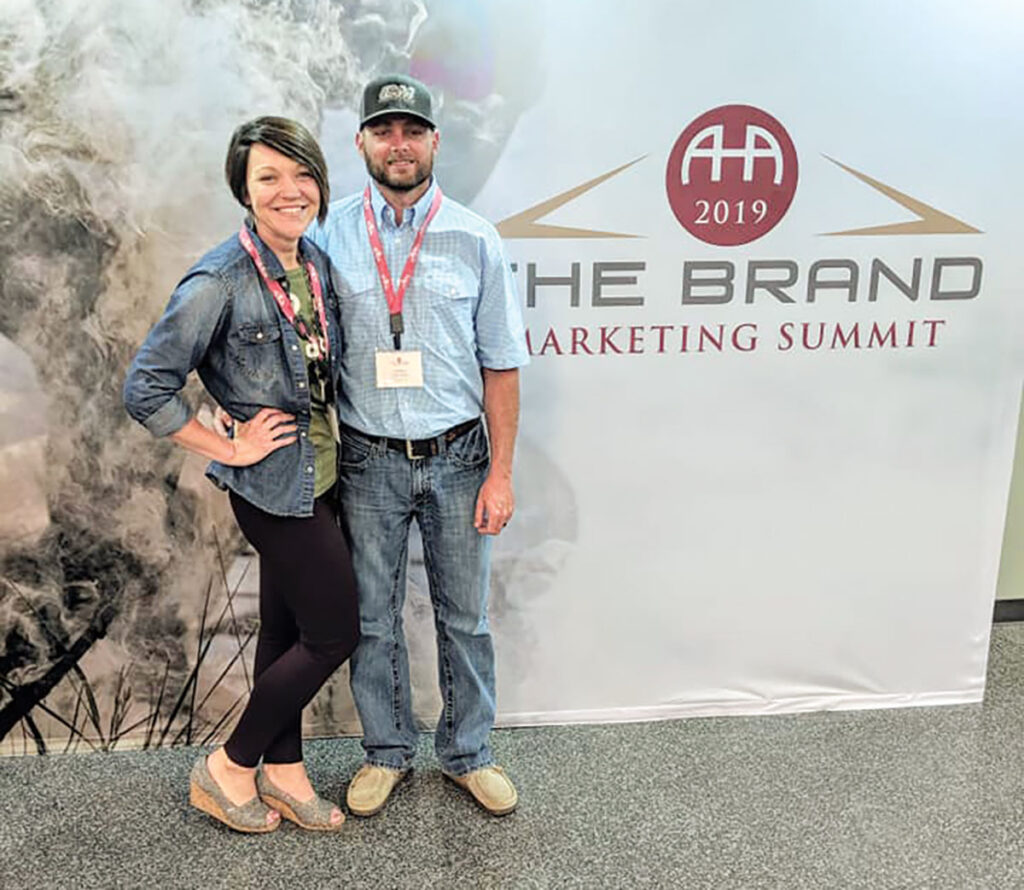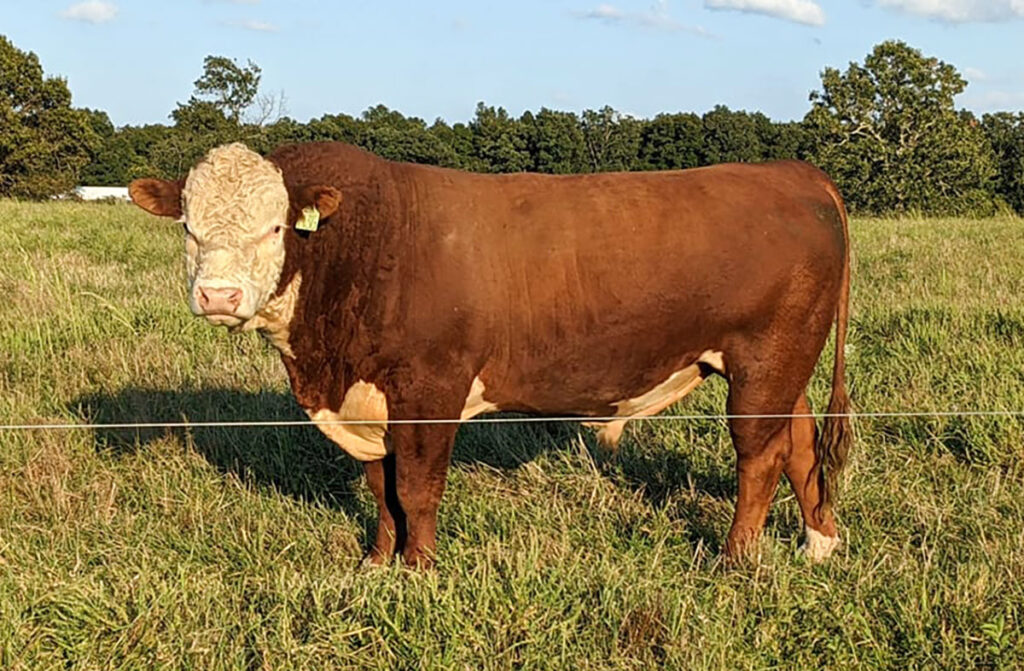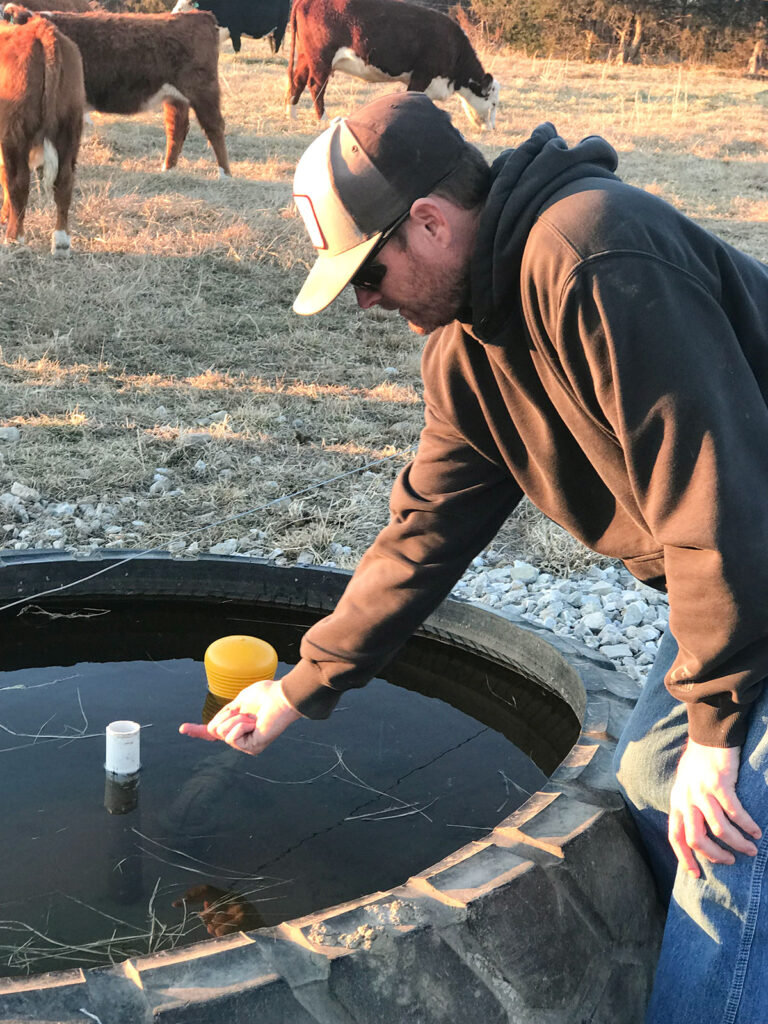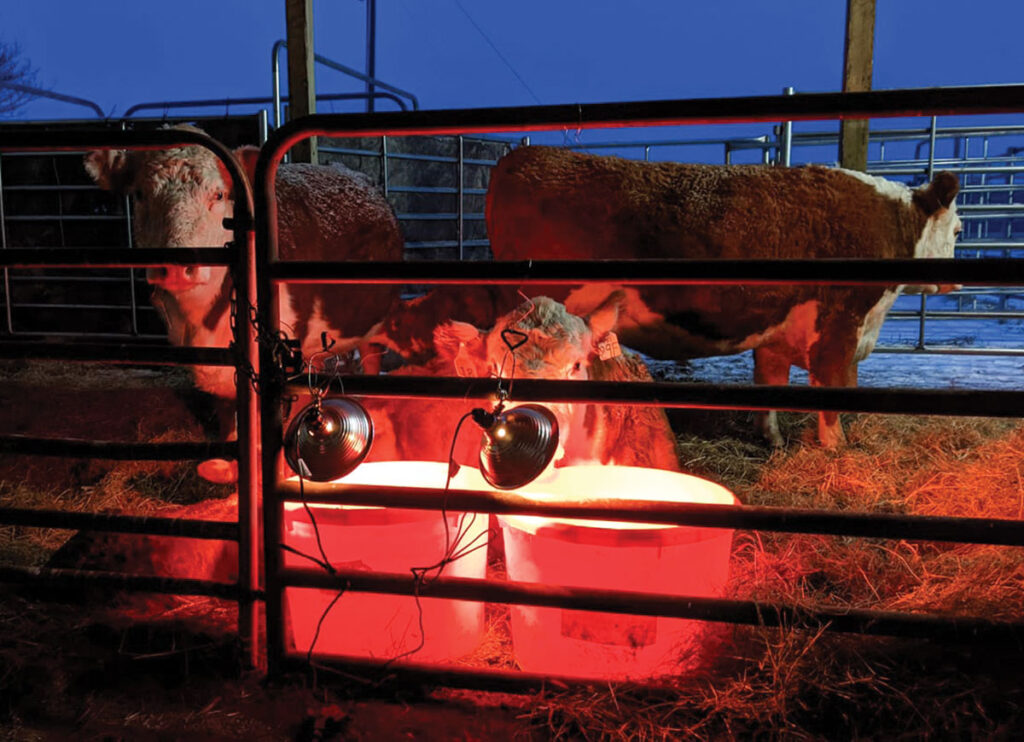
Grayson Cattle Company takes a regenerative approach to cattle and forage management
NEWBURG, MO. – Jarrod Grayson’s unique, non-traditional method of raising quality cattle has been viewed by some of his peers as a laughing stock.
With a full-time job on the railroad, in addition to being a one-man operation caring for registered Herefords and Black Herefords, Jarrod doesn’t have time to dwell on the mockery of naysayers.
Instead, Jarrod focuses on reading volumes about regenerative cattle farming. In this process, greenhouse gases are naturally absorbed into the land without damaging air quality. He’s visited farms that use the process and attended seminars/workshops hosted by experts in the field, never discounting a new or better way to improve Grayson Cattle Company.
The ultimate goal is to profitably raise genetically-superior cattle that are happy, healthy and leave no carbon footprint on the environment.
“I want my cattle to have only one bad day in their entire lifetime,” Jarrod explained.
It’s a method Jarrod said he feels is a lot easier than traditional farming, where he doesn’t feel enslaved to it. He first began regenerative agriculture on 80 acres he owned in Bourbon.
First, he chose Hereford because the breed tended to be docile, good mothers, and their carcass traits turn forage into pounds easily.
As a young man, Jarrod worked cattle with friends and always wanted to raise cattle. He got the opportunity when he and his wife Krista flipped a house and turned the profit into the purchase of a farm in Bourbon in 2015.
The couple bought the current 143-acre tract of land in 2019, and Jarrod worked for hours setting up the grid system of 12 paddocks. It enables him to rotate upward of 30 cow/calf pairs into an 11- to 14-acre paddock daily. In long, hot summer days of drought, the herd is moved twice a day to a new paddock.

An electric fence system surrounds the farm, with a 30-feet strip of land between paddocks that provides access to each, with a centrally located barn and working pens. Nosy by nature, cattle automatically respond and hurry to greet Jarrod’s arrival on the ATV. Moving the cattle from one paddock to another is a matter of unrolling one section of staked wire, letting the cows naturally walk through the adjoining section, then closing them in by rolling wire onto plastic stakes behind the cows. The process takes eight to 15 minutes.
The continual grazing movement is beneficial in several ways.
Cattle never stand in one spot long enough to chew down to the bare ground; therefore, the soil doesn’t get barren in hot weather or muddy in wet conditions. In wintertime, when the brown tops are pulled back, clover and green grass are still seen. Very little hay is needed during the winter months. About 4 to 6 inches of natural forage and grass remain even during harsh weather.
New grass growth, the primary food source, generates much faster. No fertilizer is needed because the cattle waste naturally provides it. Jarrod worries for traditional farmers because of the current shortage of fertilizer available for purchase this year to rejuvenate the barren land. If fertilizer can be found, the cost has inflated about 200 percent.

Cattle aren’t watered from a pond. Well water is pumped into a large implement tire containing water, permanently placed halfway between two paddocks, underneath the electric fencing, allowing watering from each side.
The absence of a pond keeps the hair on the cattle from getting muddy and wet. Cattle with clean coats are healthier, Jarrod explained, because they aren’t exposed to bacteria that cause illness. A dry coat also keeps them warmer or cooler, and gives the natural ability to insulate during changing temperatures. A matted, muddy coat prevents the cow from utilizing its natural insulation to stay warm or cool. Studies indicate calves raised on waterers are 50 pounds heavier than those who aren’t.
USDA programs pay about 75 percent of fencing and well projects. To secure government funding for projects, there is a business plan and application process. Jarrod said a good business plan needs to be in place anyway, and the application was not painstaking.
Fewer overhead costs, lower mortality rates, and less time caring for cattle translates to an increased profit and a situation where Jarrod isn’t enslaved to the herd.
Jarrod describes himself and his wife Krista, a sales director for an international company based in Missouri, as open-minded and progressive thinkers.
“The most dangerous saying in farming is, ‘we’ve always done it this way’,” Jarrod said.
As a first-generation farmer, Jarrod had to learn how to manage his land and cattle on his own, so there were no preconceived or generational notions of how it “should” be done.
He’s always looking for the opportunity to change and grow the operation. Next year, Jarrod plans on introducing St. Croix sheep into the mix. The sheep require no worming, shearing or tail docking. The meat breeding stock will also be rotated sheep eat the weeds and plants the cows don’t find tasty.
Jarrod feels like farmers who practice regenerative methods have faced ridicule because they’ve failed to market their successes. He’s more than happy to visit and show other farmers how this method works.
Krista suggested Jarrod make YouTube videos of the process and he’s considering it. Their registered breeding stock is currently marketed on social media, with a website and word of mouth.
Jarrod and Krista’s plans for the future include Jarrod transitioning to regenerative farming full time in five years
Jarrod plans to continue reading all he can, use trial and error methods and surround himself with people who have been successful at utilizing methods he wants to succeed at on his cattle operation.








